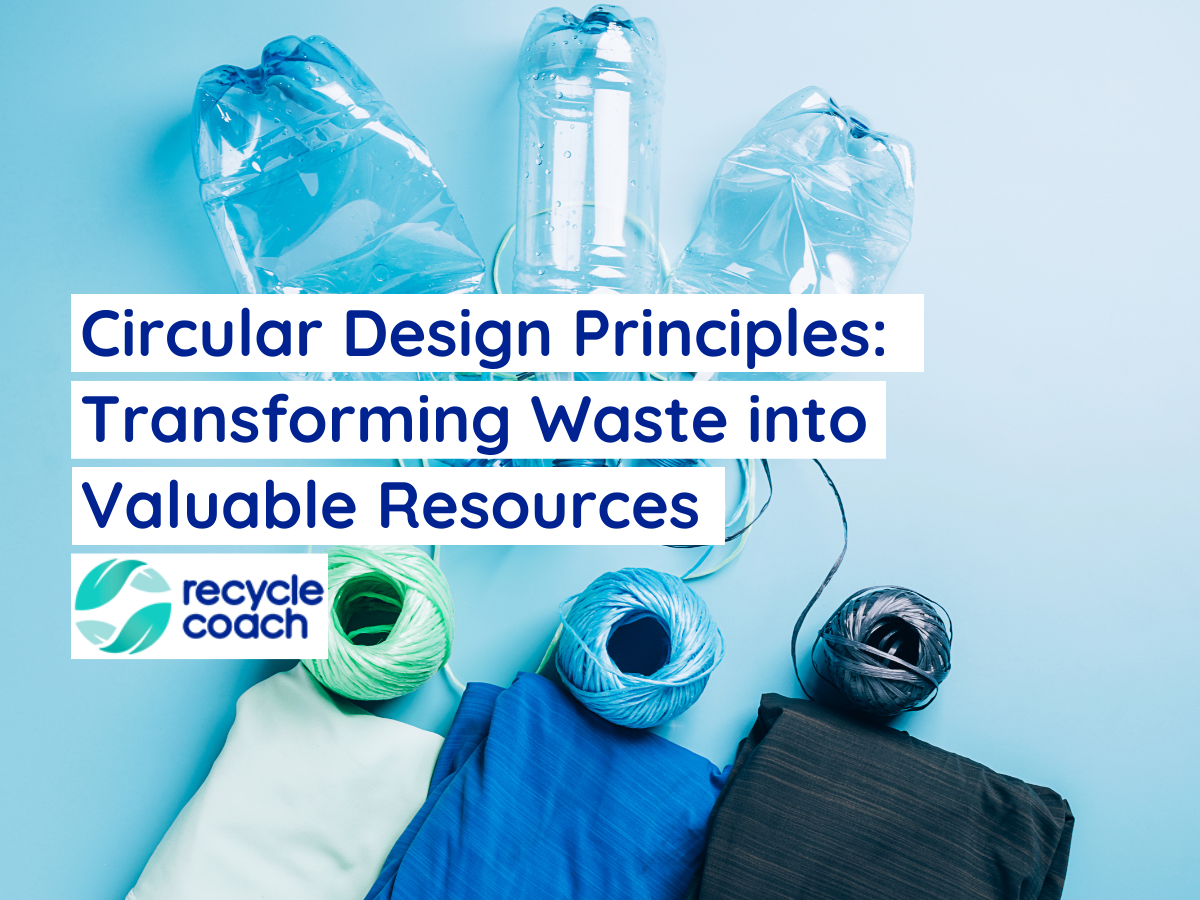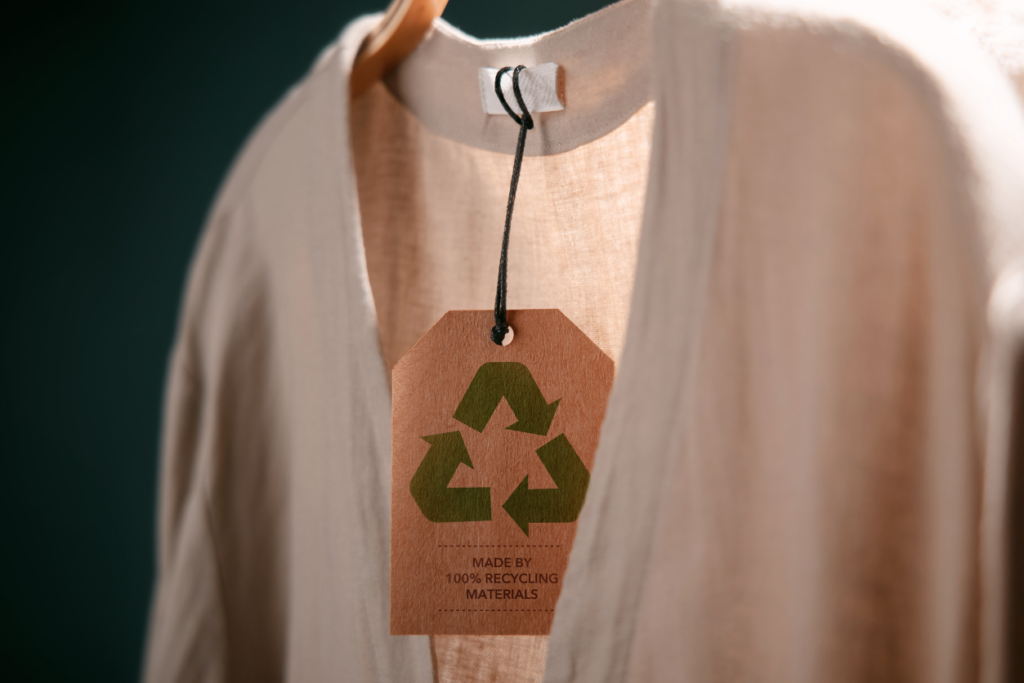Circular Design Principles: Transforming Waste into Valuable Resources

Design is the root of transformation. A truly circular economy is well within reach when waste can be incorporated into the design of products, strategies, and resources. It’s about time that design and production catch up with the changing climate and societal views toward excess waste.
The more companies that focus on sustainability and upcycling, the better chance of reducing waste and contributing to the betterment of the planet. Regardless of industry, it’s important to learn the basic principles of modern repurposing in design to make this dream a reality.
The Benefits of Circular Design — Environmental and Beyond
Circular design is the commitment to reducing the disproportionate use of natural resources through the creation of sustainable products and services. It is a crucial step in establishing a circular economy where growth isn’t merely defined by financial success but also by other principles. One of the most prominent principles is that of lowering levels of pollution, waste, water usage, and energy usage. The benefits of circular design include:
- Minimized environmental impact of design and production;
- Optimization of processes and logistics;
- Extended life of products;
- Better bottom line;
- Raised awareness surrounding environmental sustainability.
Companies can benefit in just about every way by adopting sustainable design principles. This happens through four steps:
- Understanding;
- Defining;
- Making;
- Launching.
Teams must research what makes design sustainable and learn how to apply that to their products and services. Then, the conception of the product should be clearly defined and include prototypes along the way. Feedback after launch is also important — from consumers and through internal analysis of actual impact.
Choosing Responsible Materials

Conscientious design includes procuring sustainable materials. Designers are increasingly tasked with choosing materials that not only serve functional and aesthetic purposes but also align with principles of environmental responsibility. Opting for renewable resources, biodegradable alternatives, and recycled materials not only reduces the demand for natural resources but also minimizes the ecological footprint of a product throughout its lifecycle.
This emphasis on using responsible materials ensures that, from extraction to production and eventual disposal, the environmental impact is mitigated. This mindful product design contributes to a circular economy where resources are conserved, waste is minimized, and the overall ecological balance is respected.
Modern Technology Impacting Sustainability
Technological advancements are having a tangible effect on the circular economy. Designing these types of products and services allows for the farther-reaching adoption of sustainable practices. For example, new tech affects business energy consumption by giving insight into areas for improvement and offering more efficient solutions.
Embracing renewable energy sources and incorporating them into tech design helps move the world even further into a circular mindset. The future relies on innovations in recycling that improve upon current adoption and applications. Recycling tech, like robotic waste sorters, and biotechnology, like fungi-based packaging, is helping push the sustainability movement forward.
Additionally, alternative energy solutions like solar and wind are increasingly involved in product design. It’s important for designers to consider alternative energy when coming up with new or improved applications.
Designing for Proper Maintenance and Disposal

Designing with products’ end-of-life in mind can be just as important, if not more so, than other aspects. Electric vehicles (EVs), for example, are becoming more and more popular — and this introduces a new challenge of what to do with batteries when they are ready to be disposed of. Luckily, circular design has led to solutions like the recycling of EV batteries. Instead of allowing them to end up in landfills once cars are disposed of or batteries are swapped out due to low capacity, startups such as Redwood Materials are focusing on recycling solutions for every cell of each EV battery. In turn, venture capitalists are investing in battery-recycling startups.
With recyclability in mind from the very beginning, products are more likely to be repurposed. Making this simple to do is tantamount to the success of this initiative, as well. It involves selecting materials that are easier to dismantle and extract for recycling purposes. For instance, designers have come up with modular EV batteries, allowing for the replacement of specific components rather than the entire unit. Such approaches not only extend the lifespan of products but also make the recycling process more efficient and cost-effective.
Making Upcycling Fashionable

Upcycling is nothing new, but designing products specifically to be upcycled is novel and becoming more widely accepted. Recycled footwear, for example, has stepped onto the scene in a big way. Designing a fashion product that people actually want to wear, one that shows a tangible advantage to the environment, can be advantageous for all.
Reducing fashion waste is a big part of creating a more sustainable future, and ethical companies are taking strides to make sure they are part of that future. This involves transparency and ingenuity in product design. Additionally, brands such as Patagonia have recycling programs for their clothes. The evolution of upcycling and the growing commitment to sustainability in the fashion industry are positive steps toward a greener future. Ethical companies are not only reimagining product design but also revolutionizing the way consumers perceive and interact with fashion. This ultimately contributes to a more eco-conscious and responsible global community.
Moving Forward With Circular Design
The nature of circular design is that it will always come back to square one. This gives sustainable product designers the unique opportunity to continually tweak their process. From responsibly sourced materials to recycling program design, the entire process has to be finetuned. Through perpetual feedback and adjustment, circular design has the potential to change the way products and services are disseminated to consumers — and how they are reused, reduced, and recycled.
Author Bio
Sam Bowman writes about people, sustainability, recycling, and how they merge. He enjoys getting to utilize the internet for the community without actually having to leave his house. He volunteers his time as a local recycling and waste reduction activist, working to help people better navigate proper recycling. In his spare time, he likes running, reading, and combining the two in a run to his local bookstore.